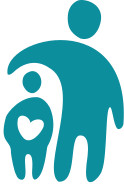Course modules
1. Trauma and wellbeing
1.1 Trauma
1.2 Welcome
1.3 Definition of trauma
2. Going through a traumatic experience
2.1 Evolutionary, cognitive and emotional response
2.2 The natural response to threat: fear
2.3 Responding to threat
3. Trauma memories
3.1 Trauma memories
3.2 The cupboard
3.3 So far, so good?
4. Recognising trauma
4.1 Recognising trauma
4.2 Signs of trauma from childhood to adulthood
4.3 Summary
4.4 Coming up: our feelings and trauma
5. Our feelings
5.1 Understanding our feelings
5.2 How we know we’re happy
5.3 How we know we’re sad
5.4 How we know we’re tired
5.5 How we know we’re anxious
5.6 Feelings
6. Containment
6.1 What’s coming up
6.2 Feeling worse
6.3 Feeling better
6.4 Containment: the basics
6.5 Containment: learning more
6.6 And more
6.7 What can happen when we have our own worries
6.8 Making space in your mind
7. Communicating feelings
7.1 How feelings are communicated
7.2 The underlying emotions
7.3 Doing things differently
7.4 Developing a containing relationship
7.5 Another example of how feelings are communicated
7.6 Underlying emotions again
7.7 Trying to do things differently
7.8 Thinking about how we say things
7.9 Saying things differently
7.10 What you’ve learnt
8. Anxiety and Depression
8.1 Revisiting emotional health
8.2 Anxiety
8.3 Anxiety and you
8.4 Depression
8.5 Common signs of depression
8.6 How to help
8.7 Feeling understood
8.8 Making changes
8.9 Getting help
9. Processing trauma
9.1 Processing emotions
9.2 Feeling emotions
9.3 The individual impact of trauma
9.4 Previous experiences and genetics
9.5 What helps us to process emotions?
9.6 Looking after our wellbeing
9.7 Downregulating
9.8 Processing trauma
10. Recovering from trauma
10.1 More about recovery
10.2 Recovery
10.3 A sense of coherence
10.4 Autobiography in 5 chapters by Portia Nelson
10.5 Stages of recovery
10.6 Recovery and neurology
10.7 Role of the amygdala and hippocampus
10.8 A ‘normal’ reaction to trauma
10.9 Containment and recovery
10.10 The setting and recovery
10.11 Summary
11. Trauma in the general population
11.1 Adverse Childhood Experiences (ACEs) and the impact on adults
11.2 ACEs and probabilities
11.3 Trauma in the population
11.4 Summary
12. Organisational trauma
12.1 Introduction
12.2 Systems under siege
12.3 SELF and organisations
12.4 Summary
13. Conclusion
13.1 Key messages
13.2 Changes
13.3 Conclusion and feedback
13.4 Acknowledgements
About this course
Since the COVID-19 pandemic began, health care environments have been under enormous pressure. Although there are many potentially traumatic situations which occur in the NHS and other healthcare environments generally, the number of people with severe illnesses and the number of deaths has been unprecedented in modern times.
Your employer will have set up support systems for you to access.
In addition, understanding more about how trauma affects people and how people recover from it may be helpful to you and your wellbeing.
This course covers emotions, how we process them, and how this links to our wellbeing and trauma. The course shows how we recognise trauma and how we can process and recover from it.


